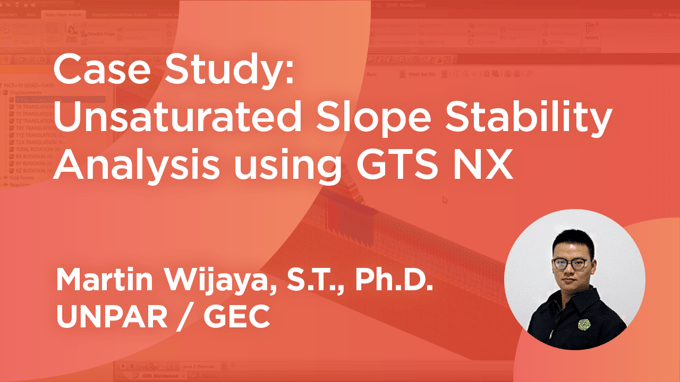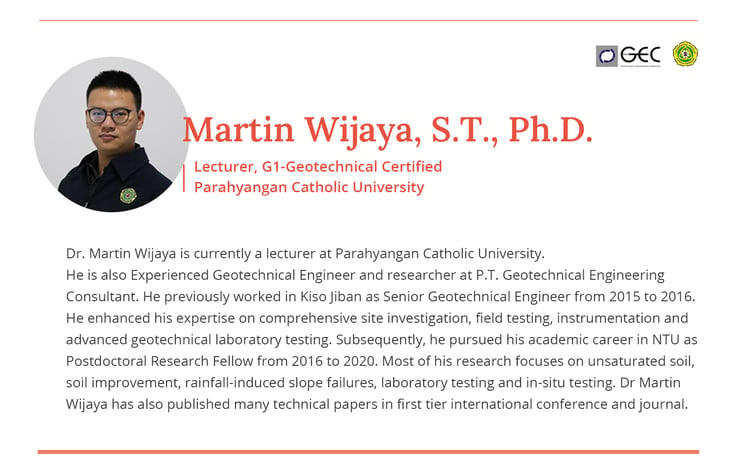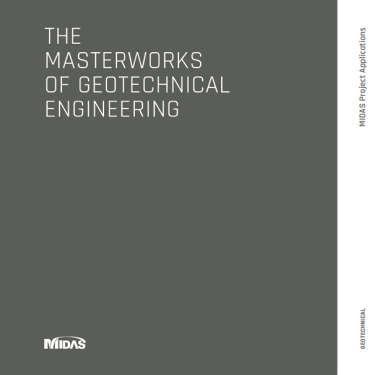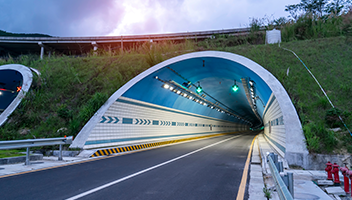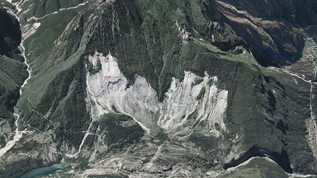Rainfall-Induced Slope Failure
Significant climate change has increased rainfall intensity in some parts of the world. Recently, a catastrophic landslide occurred at Cimanggung village (Figure 1- Catastrophic landslide_Courtesy to PT. Geotechnical Engineering Consultant) due to significant rainfall intensity. Rainfall infiltration affects the unsaturated condition of the soil near the ground surface and it increases the pore-water pressure (uw) . As a result, it reduces the soil shear strength.
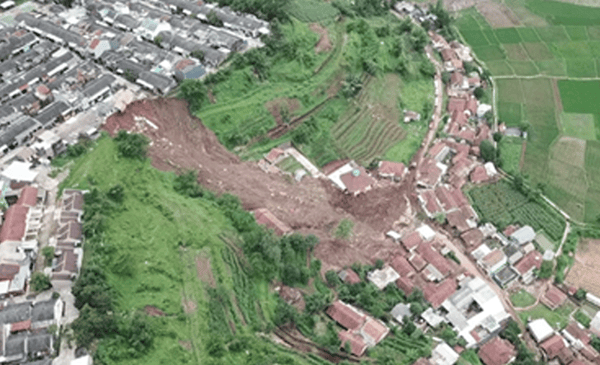 Figure 1-a. Slope Failure at Cimanggung, Sumedang
Figure 1-a. Slope Failure at Cimanggung, Sumedang
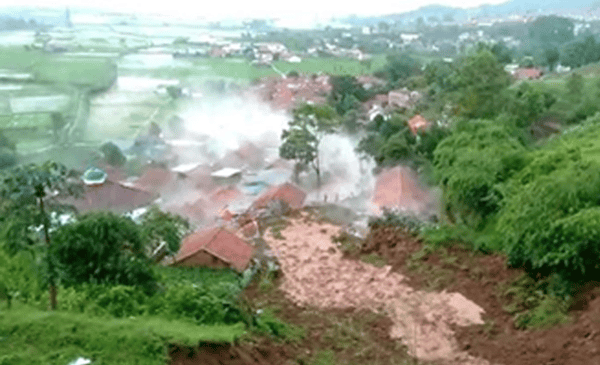 Figure 1-b. Slope condition during site visit
Figure 1-b. Slope condition during site visit
Based on the geological map of Cimanggung (Figure 2), it is known that most of the soil at the site consists of residual soil from volcanic rock (and hence referred as volcanic soil). Soil consists mostly of tuff, breccia, lava, and agglomerate. Groundwater table varies from 8.5m to 20m depth. Hence, it is important to consider the unsaturated soil mechanics to understand the mechanism of rainfall-induced slope failure in the analyses of slope stability.
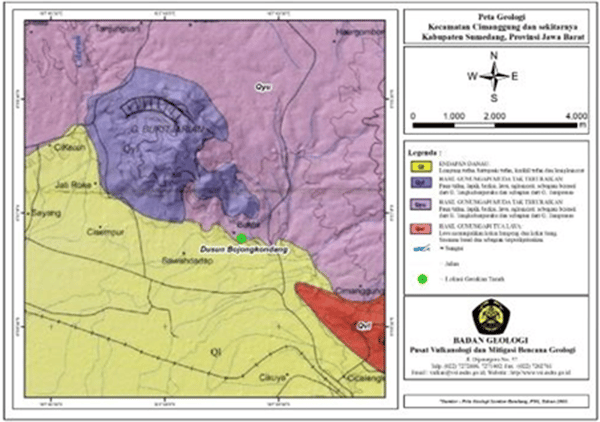 Figure 2. Geological map of Cimanggung Village
Figure 2. Geological map of Cimanggung Village
(Source: Badan Geologi, Pusat vulkanologi dan Mitigasi Bencana Geologi)
Pore‑water pressure (uw) in the unsaturated region is usually negative as described in Figure 3. Under steady-state condition and during the periods where there are no evapotranspiration or infiltration, uw is hydrostatic.
However, the presence of evapotranspiration results in the subsequent decrease in pore-water pressure. Hence, no longer hydrostatic pore-water pressure is observed above the groundwater table. On the other hand, uw will decrease and it might become positive when there is an infiltration occurred at the ground surface. The depth at which the pore pressure is affected by infiltration is referred to as the depth of the wetting front. If the infiltration is significant enough, it is possible that a perched water table will occur in the unsaturated zone.
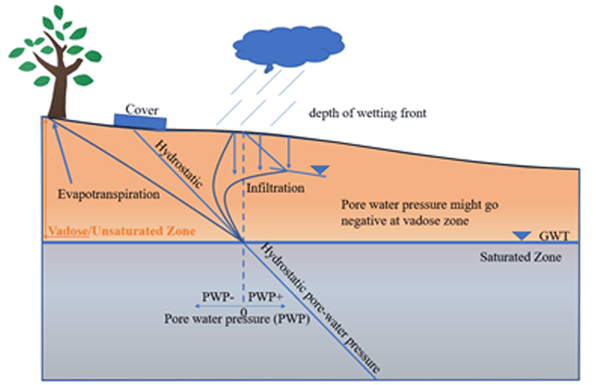 Figure 3. Pore-pressure distribution in unsaturated soil
Figure 3. Pore-pressure distribution in unsaturated soil
Negative pore-water pressure is usually referred to as matric suction (s) which is commonly described as: 
"It is important to note that soil may also have osmotic suction and hence the total suction is equal to the summation between matric suction and osmotic suction. However, it is quite common to use soil suction as generic term to describe any of the matric suction, osmotic suction, or total suction. In modelling unsaturated slope, it is important to consider the change in permeability and shear strength due to the change in soil suction (Wijaya and Leong 2018) which is shown in Figure 4."
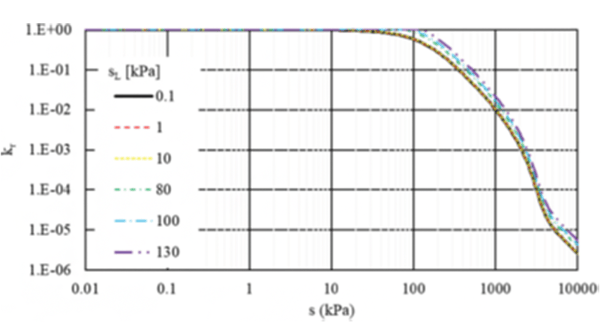 Figure 4. Change in permeability due to the change in soil suction (Wijaya and Leong 2018)
Figure 4. Change in permeability due to the change in soil suction (Wijaya and Leong 2018)
Permeability is commonly estimated from the so-called soil-water characteristic curve (SWCC) which is shown in Figure 5. The Y-axis of the SWCC can be either gravimetric water content (SWCC‑w), volumetric water content (SWCC‑ ), or degree of saturation (SWCC‑S). It is important to note that permeability must be estimated using SWCC-S due to shrinkage that may occur especially within fine-grained soil. (Wijaya and Leong 2018; Wijaya et al. 2015)
), or degree of saturation (SWCC‑S). It is important to note that permeability must be estimated using SWCC-S due to shrinkage that may occur especially within fine-grained soil. (Wijaya and Leong 2018; Wijaya et al. 2015)
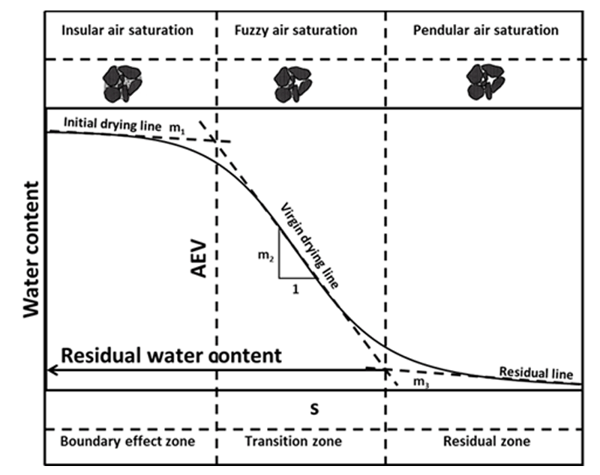 Figure 5. Soil-water characteristic curve (Wijaya et al. 2015)
Figure 5. Soil-water characteristic curve (Wijaya et al. 2015)
In MIDAS GTS NX, change in shear strength is considered in the numerical analyses using Bishop effective stress which is given as follow:

Where  ’ is equal to effective stress,
’ is equal to effective stress,  is total stress, ua is pore-air pressure,
is total stress, ua is pore-air pressure,  is coefficient related to the contribution of soil suction to the effective stress (which is assumed equal to degree of saturation, Sr). The simplicity in Bishop effective stress has made the concept of effective stress for unsaturated soil popular and implemented in many FEM software. However, there are several controversies regarding the effective stress for unsaturated soil such as:
is coefficient related to the contribution of soil suction to the effective stress (which is assumed equal to degree of saturation, Sr). The simplicity in Bishop effective stress has made the concept of effective stress for unsaturated soil popular and implemented in many FEM software. However, there are several controversies regarding the effective stress for unsaturated soil such as:
1. The value of  when determined for volume change was found to be different when determined for shear strength. (Morgenstern 1979)
when determined for volume change was found to be different when determined for shear strength. (Morgenstern 1979)
2. The collapse phenomenon which was observed in the double oedometer test by Jennings and Burland (1962) invalidates the concept of effective stress as the inundation which decreases the value of effective stress causes the soil to decrease in volume while it is expected to increase in volume.
3. The parameter is commonly related to the degree of saturation which often leads to significant error and unrealistic value, especially for clay. (Alonso et al. 2010)
parameter is commonly related to the degree of saturation which often leads to significant error and unrealistic value, especially for clay. (Alonso et al. 2010)
Thus, while the concept of effective stress can be useful in stability problems, it might not be suitable especially when dealing with collapsible soil. Thus, care must be taken when it is used.
👇 Watch the popular case study webinar
Unsaturated Slope Stability Analysis using GTS NX
Suction and Moisture Measurement in Unsaturated Slope
In order to assess the validity of the model, and to ensure the stability of the unsaturated slope, it is important to conduct suction and moisture measurements. Suction measurement is usually carried by using a tensiometer while moisture measurement is usually carried by using moisture sensors such as frequency domain reflectometry (FDR) or time domain reflectometry (TDR). Figure 5 shows the typical TDR sensor and Figure 6 shows the typical arrangement for the moisture sensor and suction probe for slope monitoring.
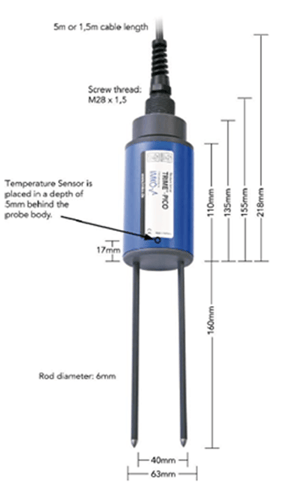 Figure 6. Trime PICO64 TDR (Courtesy to Wykeham Farrance Services Pte Ltd.)
Figure 6. Trime PICO64 TDR (Courtesy to Wykeham Farrance Services Pte Ltd.)
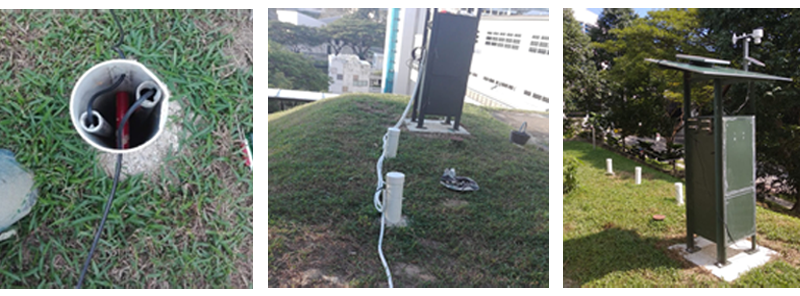
Figure 7. Field Monitoring (Hamdany et al. 2021)
3D Modelling on Unsaturated Slope
The problem in conducting a 3D slope model is in constructing the shape of the slope surface especially on the natural slope which has a complex geometry. MIDAS GTS NX has the so-called terrain geometry maker (TGM) which helps to convert contour into a surface as shown in Figure 8.
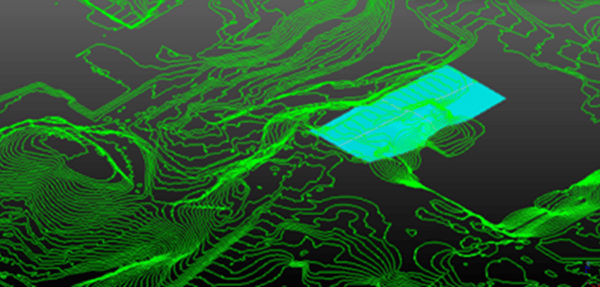 Figure 8. Terrain Geometry Maker(TGM)
Figure 8. Terrain Geometry Maker(TGM)
Figure 9 shows the 3D slope model where rainfall only occurred in the blue area. Instrumentation is placed on the observation point in order to validate the 3D model with field observation.
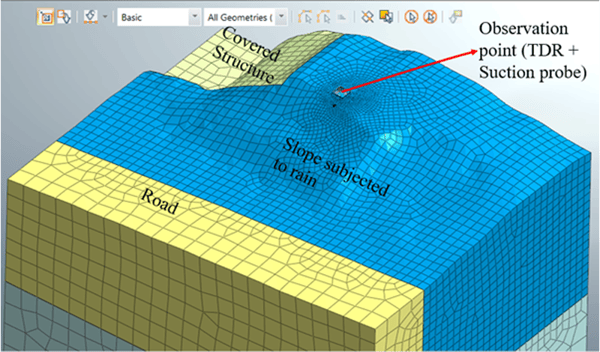 Figure 9. 3D Slope Model
Figure 9. 3D Slope Model
Figure 10 shows the verification of the 3D slope model. The change in pore pressure between MIDAS 3D matches well with the field measurement. The difference between the measured and modeled pore‑pressure is due to the fact that the input for SWCC usually ignores the hysteresis of SWCC. It is interesting to note that the phreatic surface is developed on 11/02/2020 due to the significant rainfall.
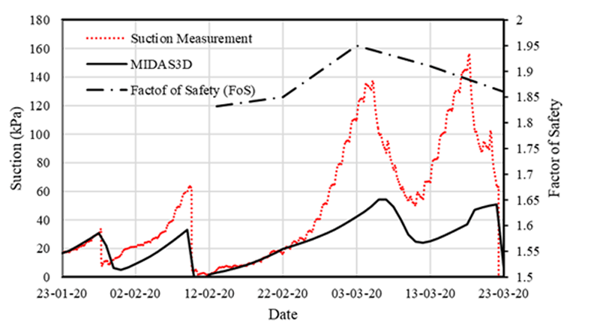 Figure 10. Change in pore-pressure and factor of safety
Figure 10. Change in pore-pressure and factor of safety
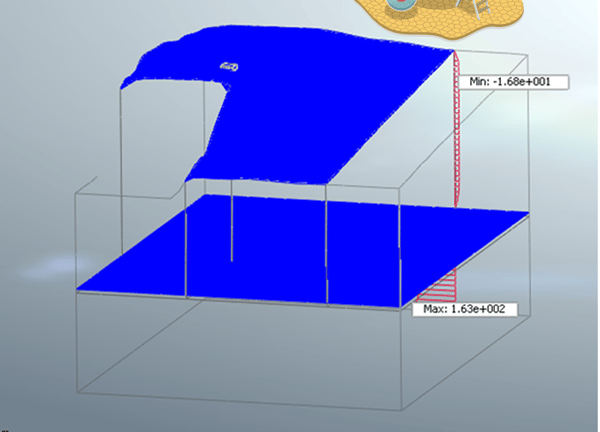
Figure 11. Phreatic surface
Conclusion
Modeling unsaturated slope stability requires a number of additional input parameters such as soil-water characteristic curve, permeability function of unsaturated soils, and rainfall/evaporation rate. On the other hand, the finite element model is the simplification of the actual conditions which are rarely homogeneous. Moreover, when the field condition is no longer can be represented by a 2D model, 3D analysis is required and hence further complicate the issues as 3D geometry is always challenging.
Thus, validation of the finite element model is important and can be carried by comparing the change in pore-water pressure or moisture in the model and from the field monitoring.
MIDAS GTS NX is a powerful tool that can be used to model 3D slope with ease due to its powerful terrain geometry maker (TGM) and it allows coupled analysis between stress and seepage in 3D. The pore-pressure responses from MIDAS GTS NX also appear to agree with the field measurement.
Reference
- Alonso, E.E., Pereira, J.M., Vaunat, J., and Olivella, S. 2010. A microstructurally based effective stress for unsaturated soils. Géotechnique, 60 (12): 913-925.
- Hamdany, A.H., Shen, Y., Satyanaga, A., Rahardjo, H., Tsen-Tieng, D.L., and Nong, X. 2021. Field Instrumentation for Real-Time Measurement of Soil-Water Characteristic Curve (Unpublished).
- Jennings, J.E.B., and Burland, J.B. 1962. Limitations to the Use of Effective Stresses in Partly Saturated Soils. Géotechnique, 12 no. 2: 125-144.
- Morgenstern, N.R. 1979. Properties of Compacted Soils. Proc. of the 6th pan-american Conf. Soil Mech. Found. Eng., 3.
- Wijaya, M., and Leong, E.C. 2018. Discussion of “Permeability function for oil sands tailings undergoing volume change during drying”. Canadian Geotechnical Journal: 1-3. doi:10.1139/cgj-2018-0136.
- Wijaya, M., Leong, E.C., and Rahardjo, H. 2015. Effect of shrinkage on air-entry value of soils. Soils and Foundations, 55 (1): 166-180. doi: http://dx.doi.org/10.1016/j.sandf.2014.12.013.
